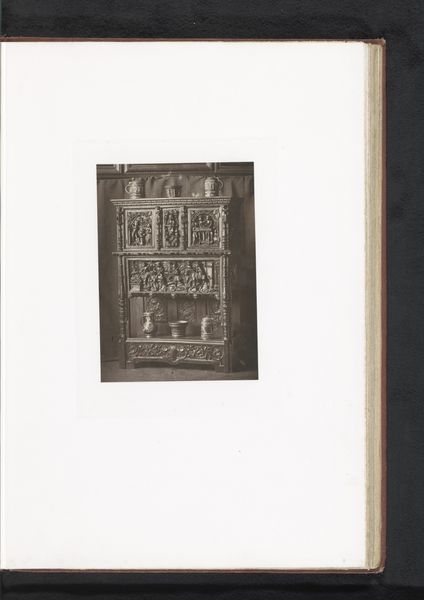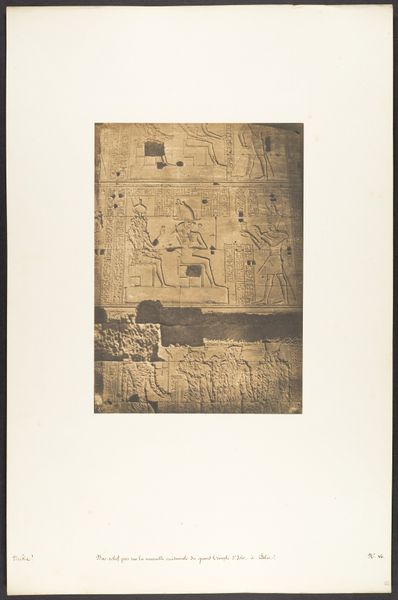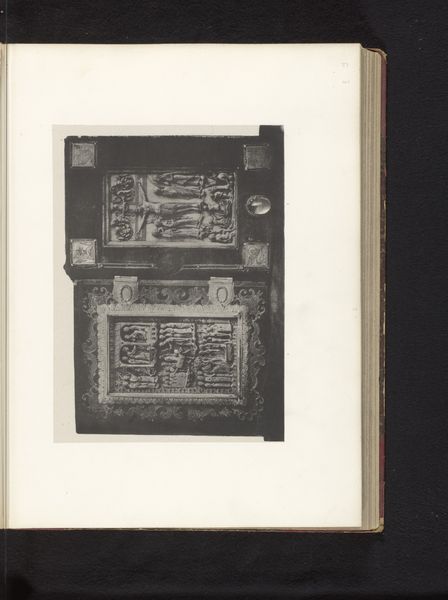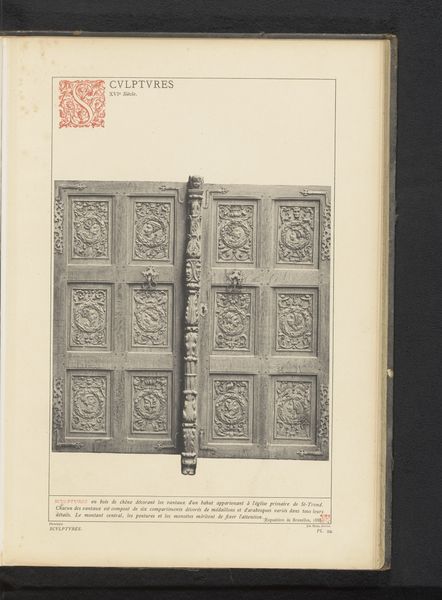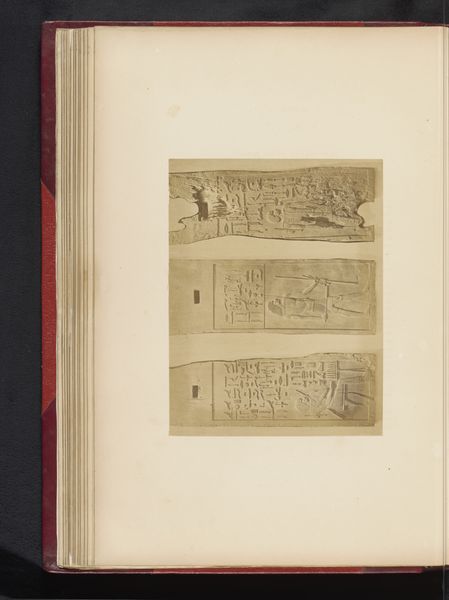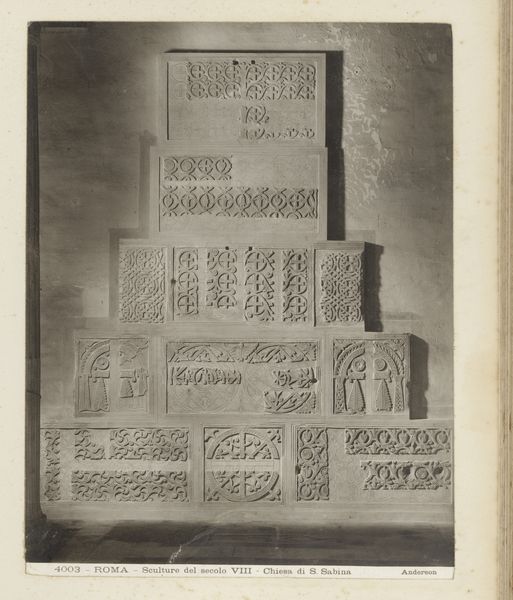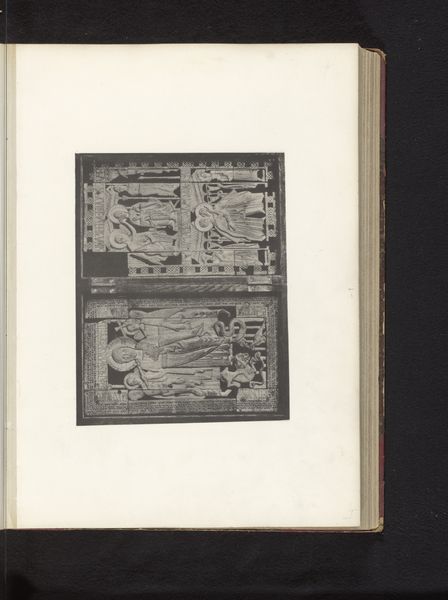
carving, print, relief, photography, sculpture
#
carving
# print
#
sculpture
#
relief
#
photography
#
ancient-mediterranean
#
sculpture
#
carved
Dimensions: height 449 mm, width 328 mm
Copyright: Rijks Museum: Open Domain
Curator: Here we have an early photographic print capturing two sides of an Etruscan terracotta sarcophagus, dating from before 1874. The photo documents carved relief panels on the sarcophagus, depicting scenes of considerable narrative complexity. Editor: The mood it evokes is incredibly somber. Seeing it in this early photographic form, a precursor to modern documentation, intensifies the feeling of gazing into a distant, weighty past. The grayscale and the shallow depth really draw out the texture of the stone or clay. Curator: Exactly. Considering the Etruscan culture was absorbed by the burgeoning Roman empire, these funerary objects serve as crucial material records that challenge a purely Roman-centric historical narrative of the region, giving agency and visibility to pre-Roman identities. Editor: Let's consider the material reality for a moment. Terracotta, essentially fired earth, suggests a widely accessible material. Did its accessibility influence funerary practices and who had access to elaborate burial rituals? The level of detail suggests a substantial amount of skilled labor, the carving seems very labor-intensive. Curator: That’s insightful. The materiality indeed informs accessibility. While terracotta was relatively common, the artistry involved certainly signifies elite status. These images also reveal aspects of gender and societal roles of the interred, with scenes possibly portraying their status and family lineages. We see visual indicators of power within these panels, even in these fragments. Editor: How fascinating. This photographic documentation itself speaks volumes about the historical and material value assigned to such artifacts even in the 19th century. It represents an attempt to capture and circulate the essence of a civilization through the very act of reproduction and labor. It makes me question the motives of those making and preserving. Curator: Absolutely, the history of archiving and photographing becomes woven into the very understanding of the culture represented here, allowing contemporary eyes to participate in the afterlife of those long since past. Editor: Seeing these sides of the sarcophagus presented in photographic form has highlighted how labor and social practices intertwine and reveal ancient and modern values. It is nice to imagine that through art history our roles now do as well.
Comments
No comments
Be the first to comment and join the conversation on the ultimate creative platform.
